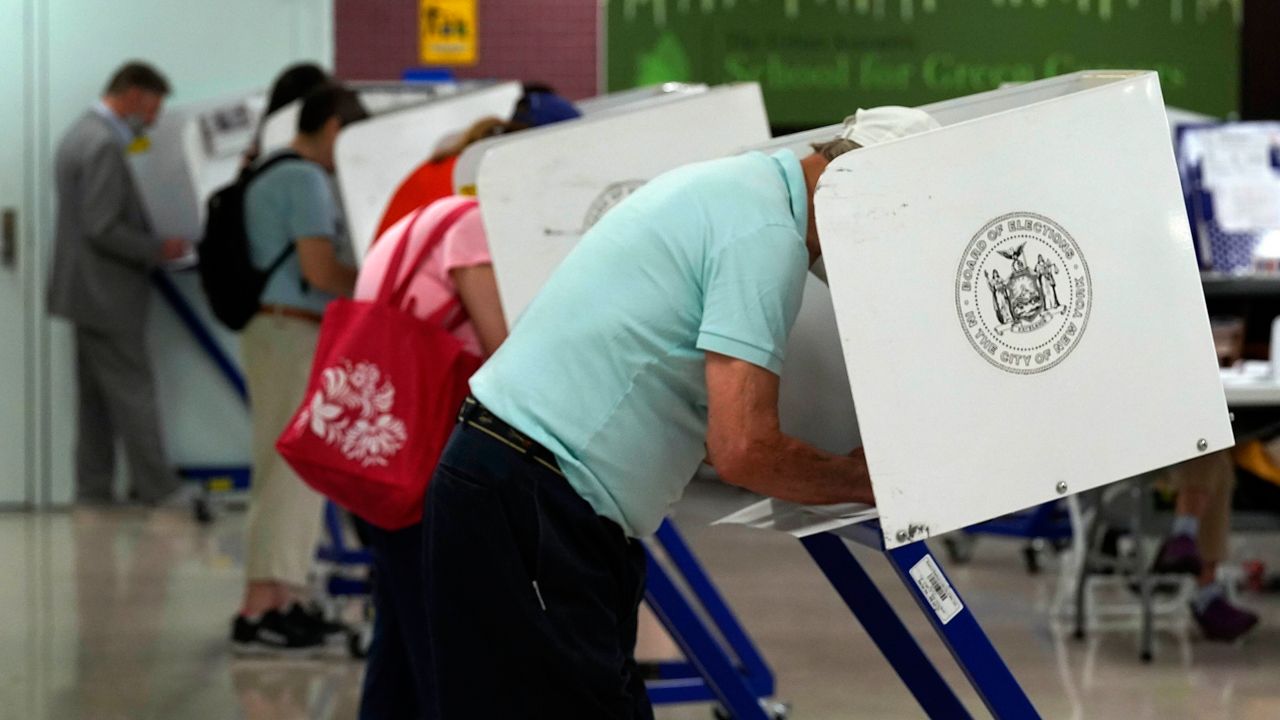Not only are voters being asked to pick their next mayor in this election season, but they’re also weighing in on several major ballot proposals.
While three of them concerning housing have been receiving a lot of attention, there are two others that haven’t been getting much debate.
What You Need To Know
On Nov. 4, voters across the state will decide whether they’ll approve a ballot proposal aimed at letting the state government convert woods into ski trails in rural Essex County
The proposal lets New York’s Olympic Regional Development Authority build on 350 acres worth of protected forest near Lake Placid, requiring the state to purchase 2,500 acres to give back
Another ballot proposal would change city elections held during odd years — like the ones for mayor, comptroller and public advocate — to even years, when presidential and gubernatorial elections are held
One of them concerns state land nearly 300 miles away from the city, while another would start the process to change the election calendar.
On Nov. 4, voters across the state will decide whether they’ll approve a ballot proposal aimed at letting the state government convert woods into ski trails in rural Essex County.
“Does it mean we’re gonna lose trails here?” one Bronx voter asked NY1.
The answer? No.
“Well, I don’t know why we’re voting for it, but I would be OK with them getting some more trails. I like trails. I think it’s good to walk, it’s good to hike. If they get some more trails, I’m fine with that as long as it doesn’t mean that we have to close Central Park because we can’t afford to have both,” he said.
The proposal lets New York’s Olympic Regional Development Authority build on 350 acres worth of protected forest near Lake Placid, requiring the state to purchase 2,500 acres to give back.
But there’s a catch: it’s asking voters to greenlight construction that already happened in 2021.
“We had discovered mid-construction that they were doing things on state land that were not permitted by the Constitution,” John Sheehan, with the environmental advocacy group Adirondack Council, said during an interview with NY1.
The 6 million-acre Adirondack Forest Preserve is protected by the State Constitution under the “forever wild” clause.
Sheehan said cutting down trees for ski trails and a storage shed was a problem, but he helped strike a bargain: a constitutional amendment.
“That would not only give us the opportunity to clean up the past constitutional violations, but also make sure that nothing like that happens again in the future,” he said.
City voters get a say because all constitutional changes require a vote by state residents.
“In many cases, it is hard to distinguish this Olympic property from the forest preserve around it,” he said, arguing the changes made don’t negatively impact the land.
Another ballot proposal would change city elections held during odd years — like the ones for mayor, comptroller and public advocate — to even years, when presidential and gubernatorial elections are held.
“The origin of this election calendar is actually in trying to defeat Tammany Hall, the old party machine,” explained Ben Weinberg, policy director at Citizens Union.
Advocates say it’ll save the city and state money by consolidating elections and boost turnout.
“We’ve seen several states do that, and what we’ve seen in all these places: voter turnout for local office doubles or sometimes more than doubles,” Weinberg said.
“We will draw a much younger electorate and an electorate that is much more representative of the community as a whole. The largest benefits will go to communities of color and to younger voters.
If passed, the state legislature still must approve a new law two years in a row signed by the governor, and then it’ll go again to voters statewide as a constitutional amendment.
A separate measure consolidating odd and even year elections for offices outside the five boroughs was already approved by the state legislature, but opposed by Republicans who argue it will grant Democrats an advantage.

